Independence Day is a significant occasion that holds great importance for people around the world, as it symbolizes the triumph of liberty and the spirit of unity. Every year, on the 4th of July, the United States commemorates its Independence Day, marking the historic moment when the nation declared its freedom from British rule.
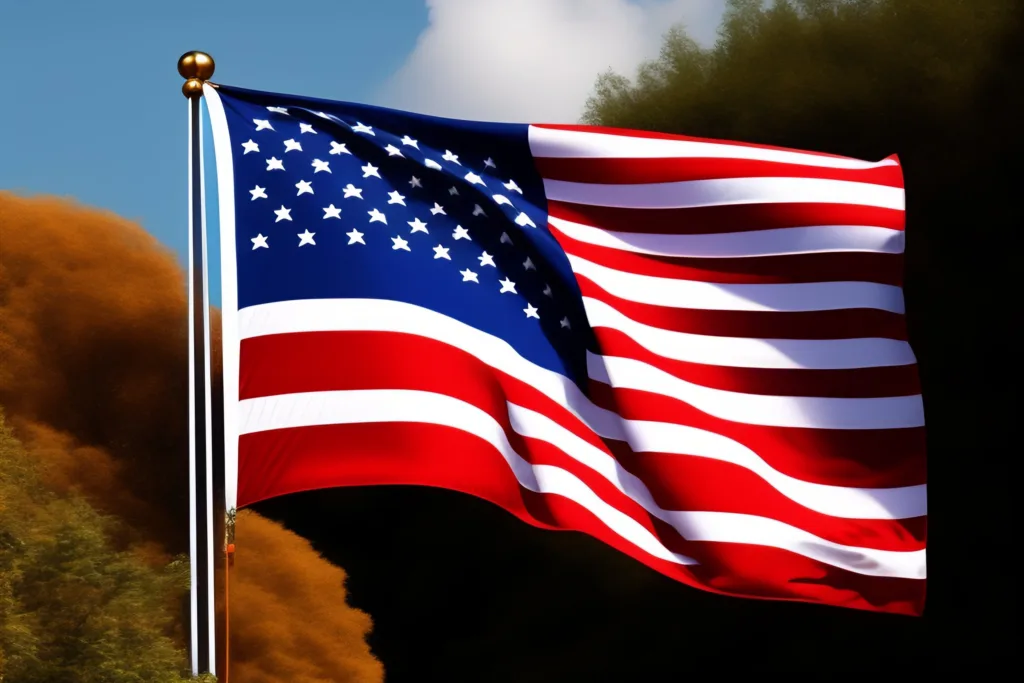
The History of Independence Day of United States
In the 18th century, the eastern coast of North America consisted of thirteen British colonies, including Massachusetts, Virginia, New York, and Pennsylvania, which were under British rule. Tensions arose between the colonists and the British authorities due to grievances over taxes, such as the Sugar Act and the Stamp Act, without representation in the British Parliament.
In 1773, the colonists protested the Tea Act through the Boston Tea Party, where they dumped tea into Boston Harbor. This act of resistance further fueled the conflict with British authority.
On July 4, 1776, the Continental Congress adopted the Declaration of Independence, primarily written by Thomas Jefferson. The document outlined the colonies’ grievances against the British Crown and declared their independence, marking a significant step towards establishing a new nation.
The adoption of the Declaration of Independence escalated the conflict, leading to the Revolutionary War, which began in 1775. Lasting several years, the colonists fought for their independence, engaging in key battles like Lexington and Concord and Bunker Hill. Foreign allies, particularly France, provided crucial assistance during the war.
In 1783, the Revolutionary War concluded with the Treaty of Paris, officially recognizing the United States as an independent nation. The treaty defined the country’s boundaries, stretching from the Atlantic Ocean to the Mississippi River.
The first celebration of Independence Day occurred on July 4, 1777, in Philadelphia, Pennsylvania. Festivities included parades, concerts, public readings of the Declaration of Independence, and fireworks displays. These traditions became deeply embedded in the annual commemoration of Independence Day throughout the United States.
Celebrations and traditions of Independence Day
Independence Day in America is celebrated with a variety of vibrant and festive traditions. Here are some of the common celebrations and traditions associated with this national holiday:
- Parades: Independence Day parades are held in cities, towns, and communities across the country. These parades often feature marching bands, floats adorned with patriotic themes, military units, veterans’ groups, and community organizations. Spectators line the streets, waving flags and enjoying the colorful displays.
- Fireworks: Fireworks displays are an integral part of Independence Day celebrations. Communities organize impressive fireworks shows that light up the night sky with brilliant colors and patterns. Major cities, such as New York City, Boston, and Washington, D.C., host renowned fireworks extravaganzas that attract thousands of spectators.
- Picnics and Barbecues: Many Americans celebrate Independence Day with outdoor picnics and barbecues. Families and friends gather in parks, backyards, or beaches to enjoy a day of relaxation and delicious food. Grilling hamburgers, hot dogs, and other summertime favorites is a common tradition, accompanied by sides like potato salad, coleslaw, and watermelon.
- Beach Trips and Water Activities: Given that Independence Day falls during the summer season, it is a popular time for beach trips and water activities. Families head to coastal areas or lakeside destinations to soak up the sun, swim, play beach games, and enjoy water sports like boating, jet skiing, or paddleboarding.
- Patriotic Decorations: Many Americans decorate their homes, businesses, and public spaces with patriotic symbols and colors. The American flag takes center stage, with flags displayed prominently on buildings, homes, and vehicles. Red, white, and blue decorations, including bunting, streamers, balloons, and banners, adorn streets and storefronts.
- National Anthem and Patriotic Music: The singing of the national anthem, “The Star-Spangled Banner,” is a common tradition at Independence Day gatherings. Patriotic music plays a significant role in the celebrations, with live performances of patriotic songs, such as “America the Beautiful” and “God Bless America.”
- Community Events and Festivals: Many communities organize special events and festivals to celebrate Independence Day. These events may include live music performances, arts and crafts exhibitions, carnival rides, games, and cultural displays. They provide opportunities for community members to come together and enjoy the festive atmosphere.
- Sporting Events: Independence Day is often associated with sports events, particularly baseball. Major League Baseball games are held on July 4th, and they often feature special ceremonies, patriotic uniforms, and fireworks displays. Attending a baseball game has become a popular way to celebrate the holiday.
- Reading of the Declaration of Independence: Some communities organize readings of the Declaration of Independence as a way to honor the historical significance of the day. People gather in public spaces, historical sites, or town squares to hear the powerful words that declared America’s independence.
- Reflection and Gratitude: Independence Day is also a time for reflection and gratitude. Many Americans take a moment to appreciate the freedoms and liberties they enjoy as citizens of the United States. It is an opportunity to honor the sacrifices made by the founding generation and to express gratitude for the country’s independence.
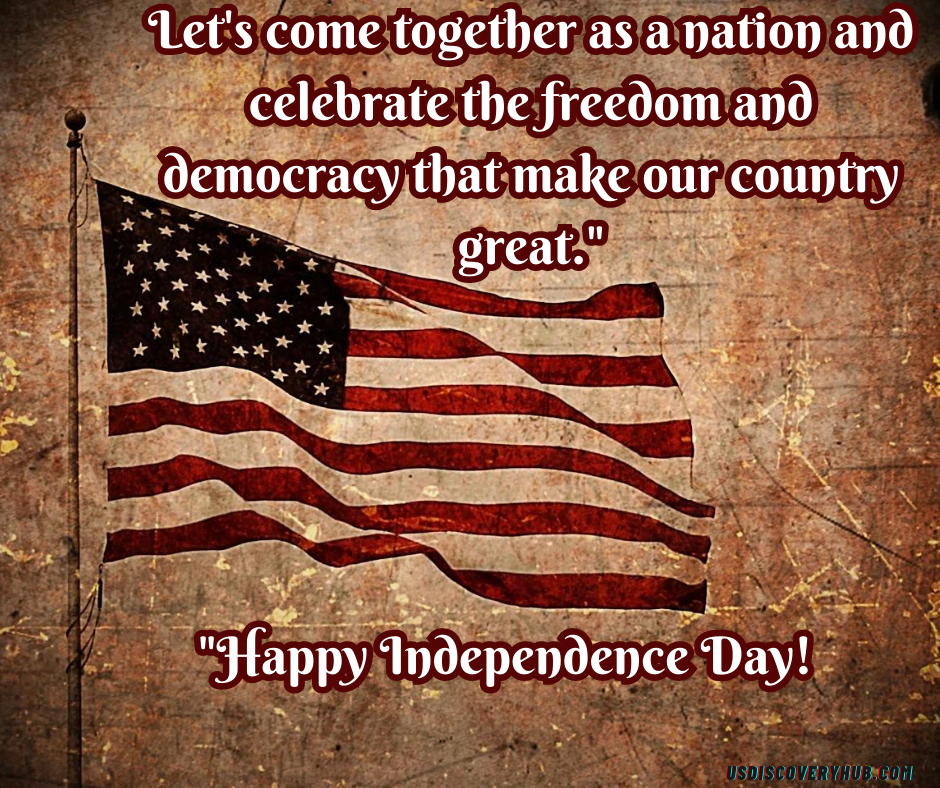
These celebrations and traditions of Independence Day bring communities together, fostering a sense of patriotism, unity, and pride in being American.
Challenges to independence of United States
After gaining independence, the United States encountered numerous obstacles that tested its stability and viability as a new nation. These challenges spanned various aspects of governance, identity, territorial integrity, slavery, political divisions, foreign relations, and national unity.
One significant challenge was establishing a stable government. Transitioning from disparate colonies to a unified nation necessitated the development of a functioning governmental structure. The initial attempt with the Articles of Confederation proved inadequate, leading to the adoption of the Constitution in 1787, which provided a framework for a more robust and effective government.
Economic struggles also plagued the young nation. War debts, inflation, and trade disruptions posed significant challenges. To stabilize the economy, the government implemented policies to address these issues, including managing debt, establishing a national currency, and promoting commerce both domestically and internationally.
Shaping a national identity was another ongoing challenge due to the diverse populations within the United States. Forging a common national identity and fostering unity among the states required constant efforts, particularly in the early years of the republic.
Securing territorial integrity presented further hurdles. The United States faced conflicts with Native American tribes and tensions with other world powers like Britain, Spain, and France, who still held claims and interests in North America.
The institution of slavery posed a grave challenge to the principles of liberty and equality upon which the United States was founded. Debates over the expansion of slavery and the balance of power between states and the federal government eventually culminated in the Civil War, highlighting the deep divisions and ethical struggles within the nation.
Political divisions and conflicts have been a recurring theme throughout American history. Early debates between Federalists and Anti-Federalists, followed by the emergence of political parties such as the Democrats and Republicans, contributed to ongoing challenges in governance.
Foreign relations and conflicts also tested the young nation. Diplomatic challenges and conflicts with other countries, including the impressment of American sailors by Britain, the War of 1812, and territorial disputes with Mexico, required the United States to navigate international relations amid a rapidly changing global landscape.
Preserving national unity during times of crisis was crucial. The Civil War and the Civil Rights Movement, among other internal conflicts, tested the nation’s commitment to its core principles and necessitated significant efforts to maintain cohesion and address fundamental issues of justice and equality.
Overcoming these challenges required strong leadership, compromises, and continuous efforts to strengthen the nation’s foundations. The United States’ ability to navigate and address these obstacles has contributed to its growth and development as a global power, while also shaping its ongoing journey toward a more perfect union.
Independence Day of United States Quotes, Wishes, Messages
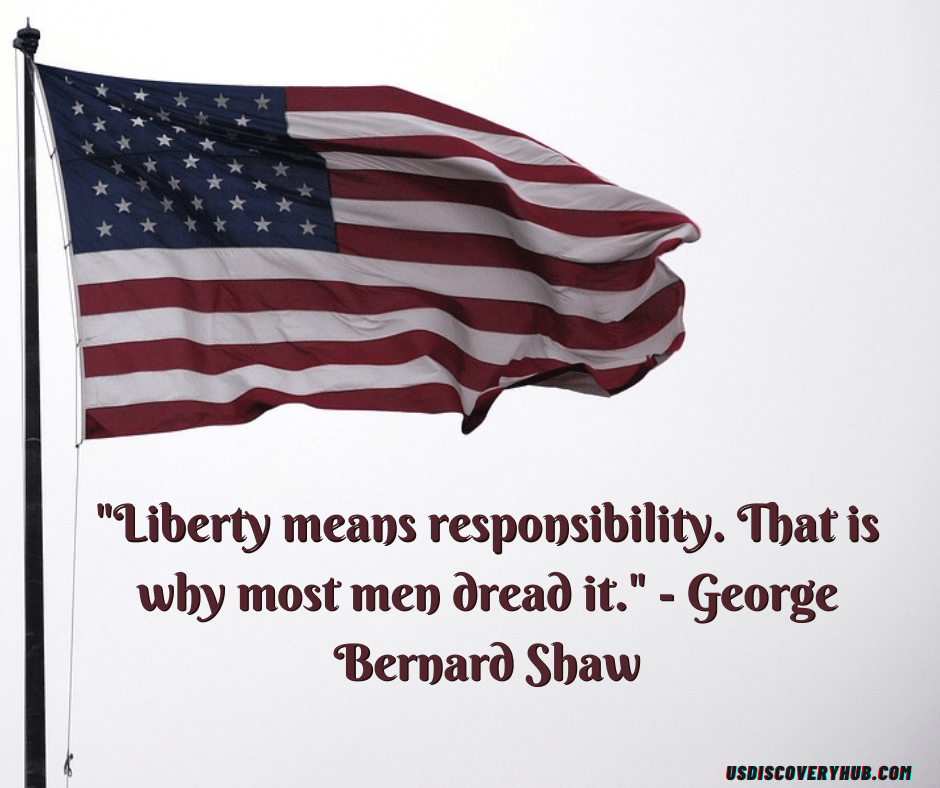
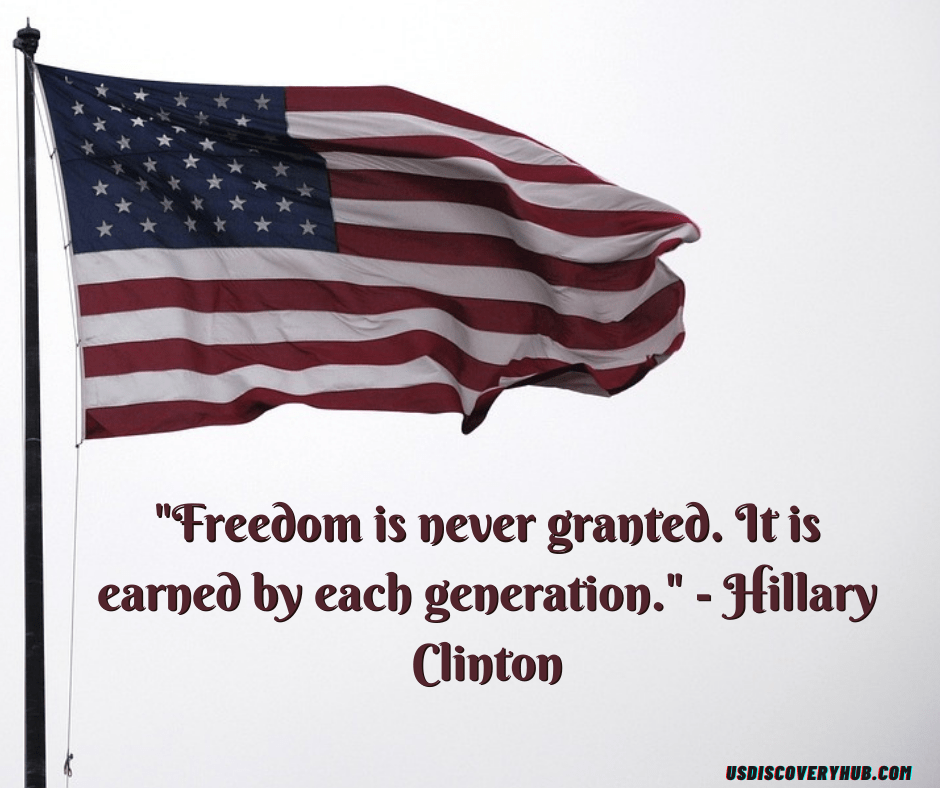
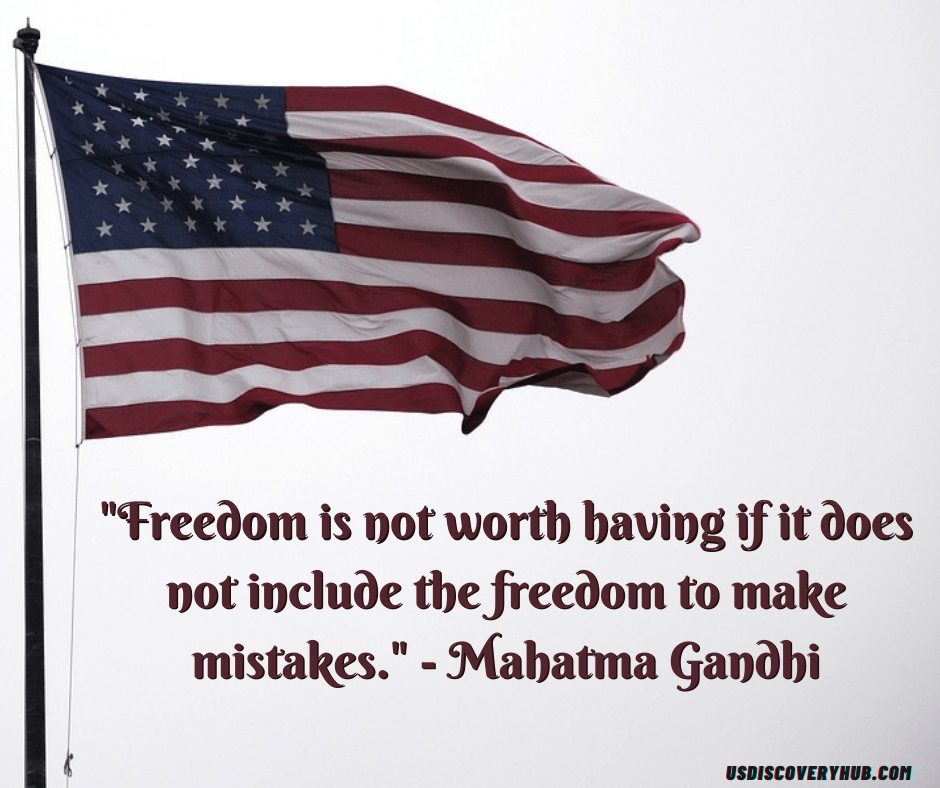
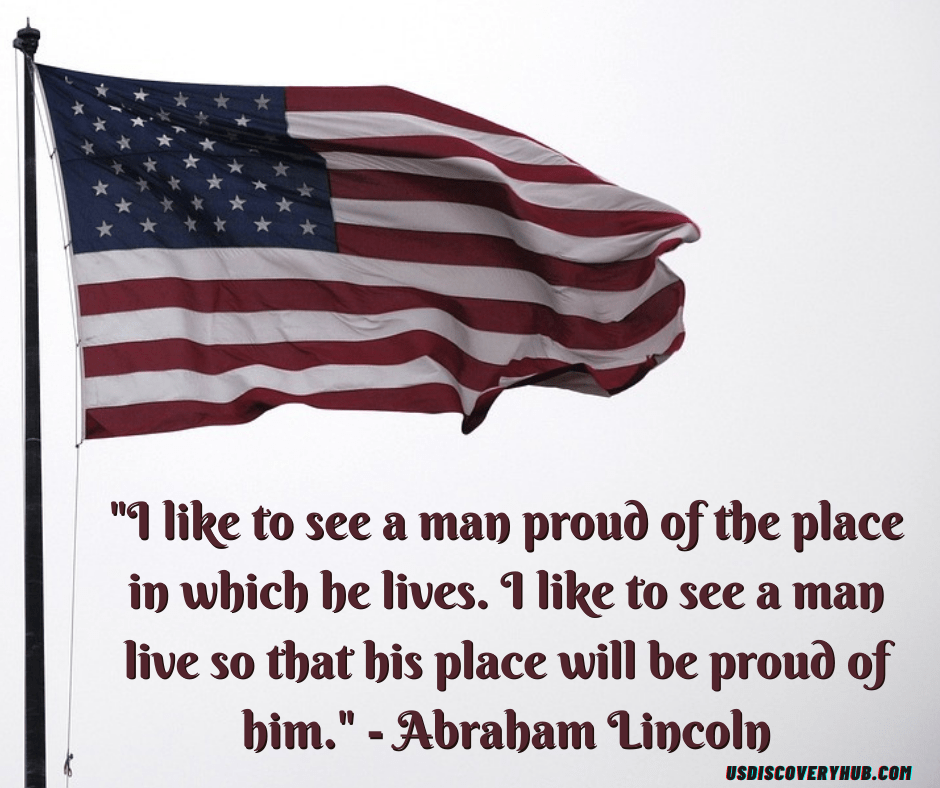
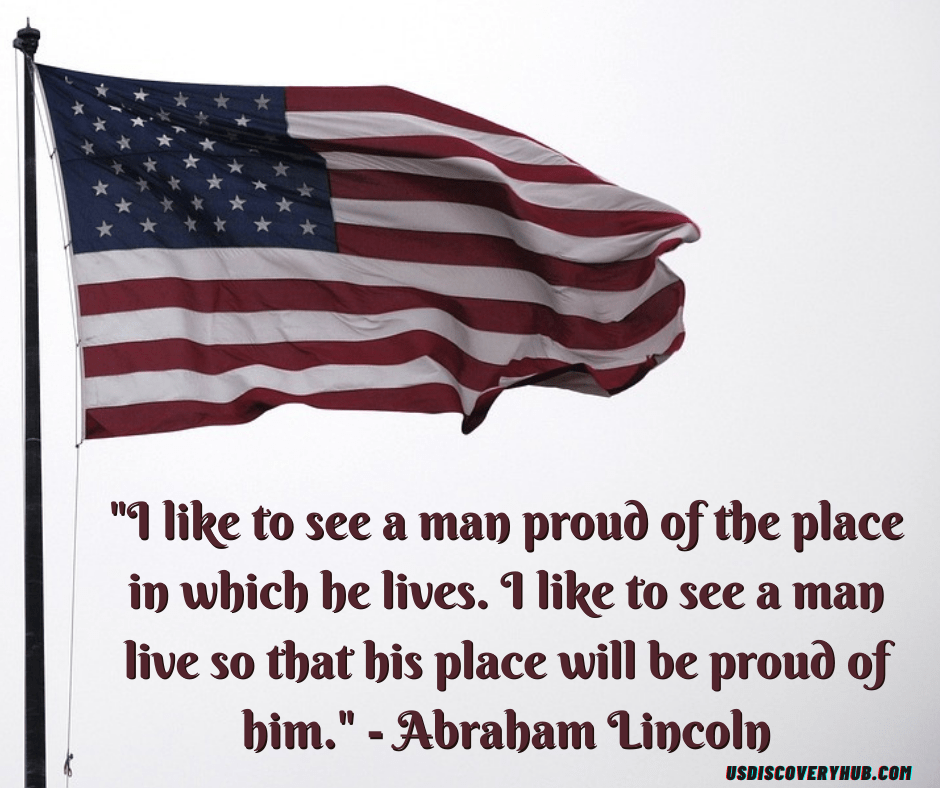

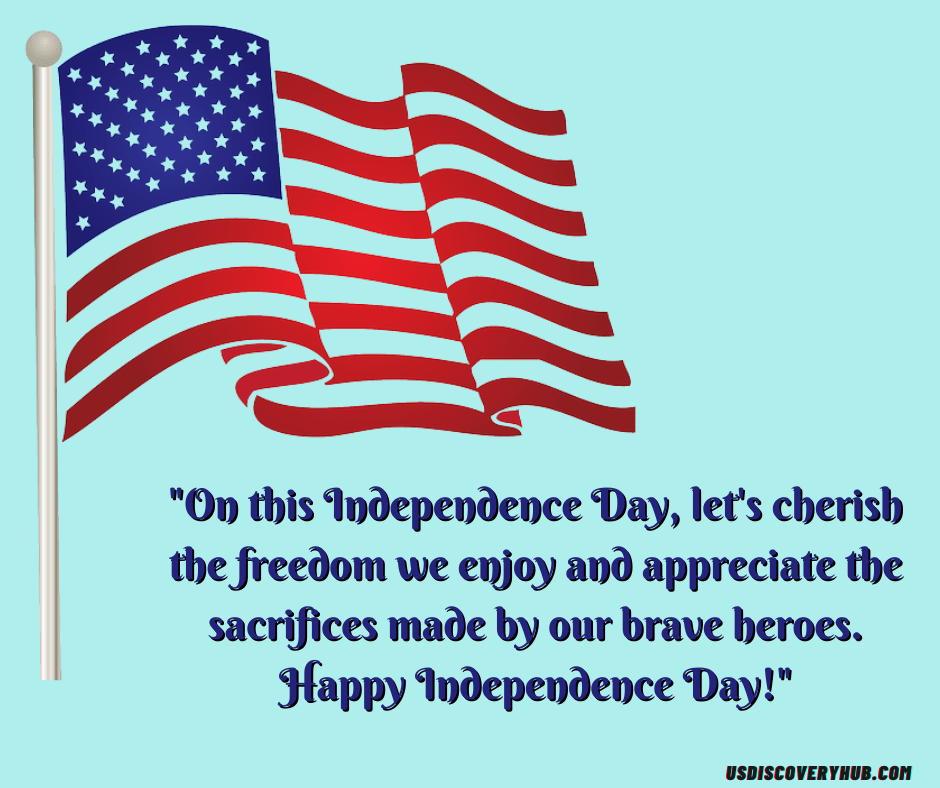
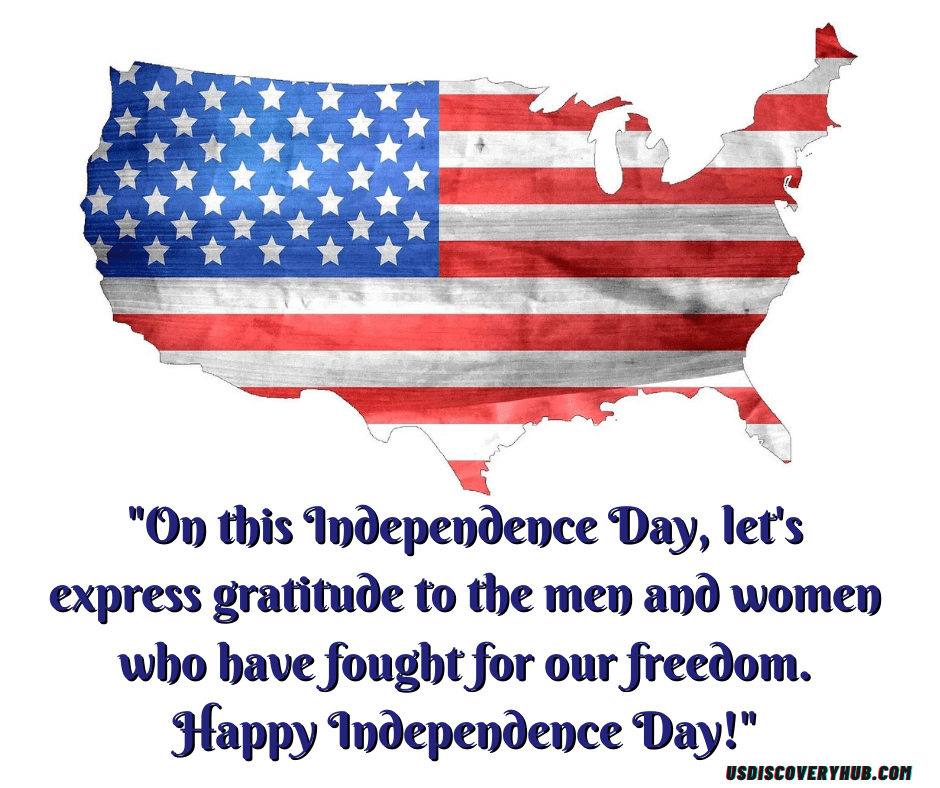
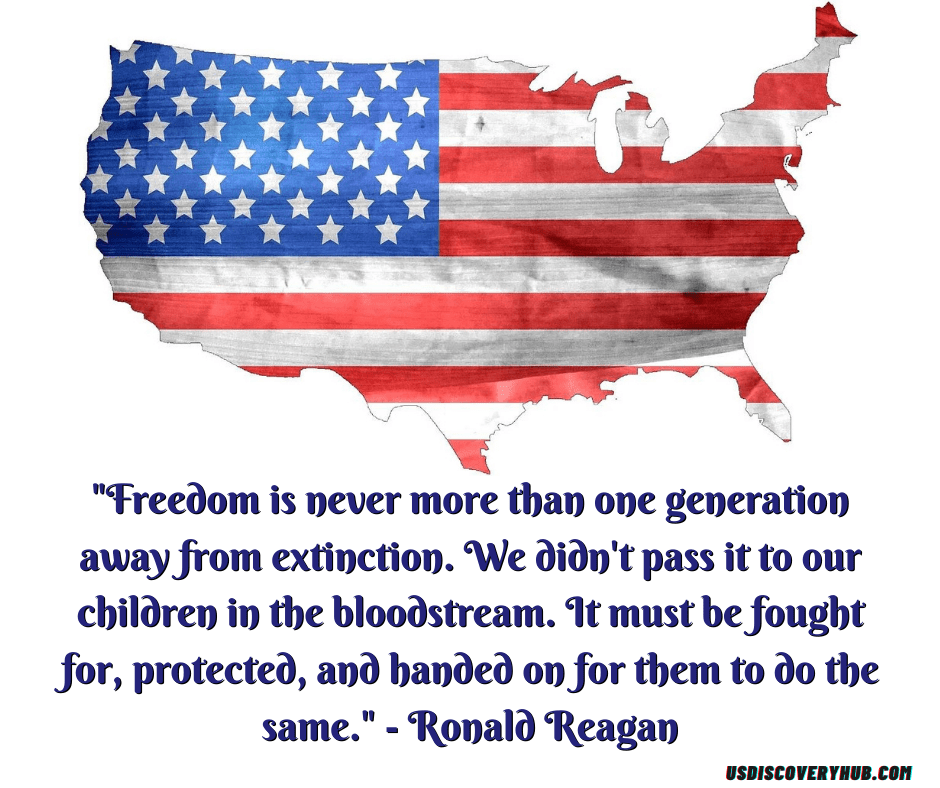
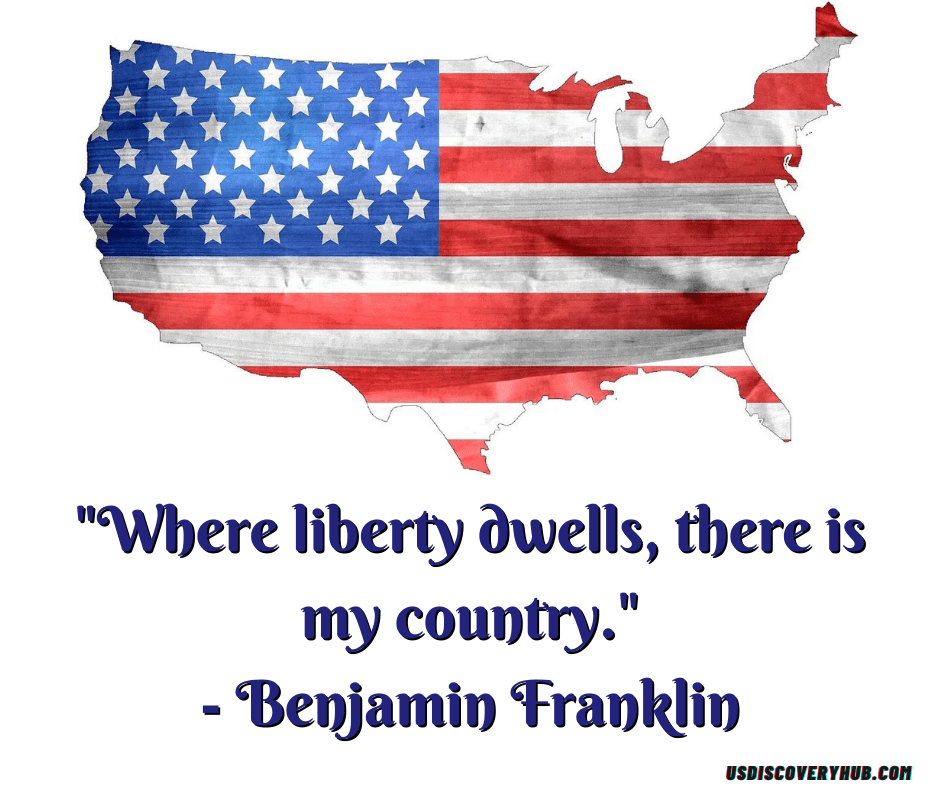
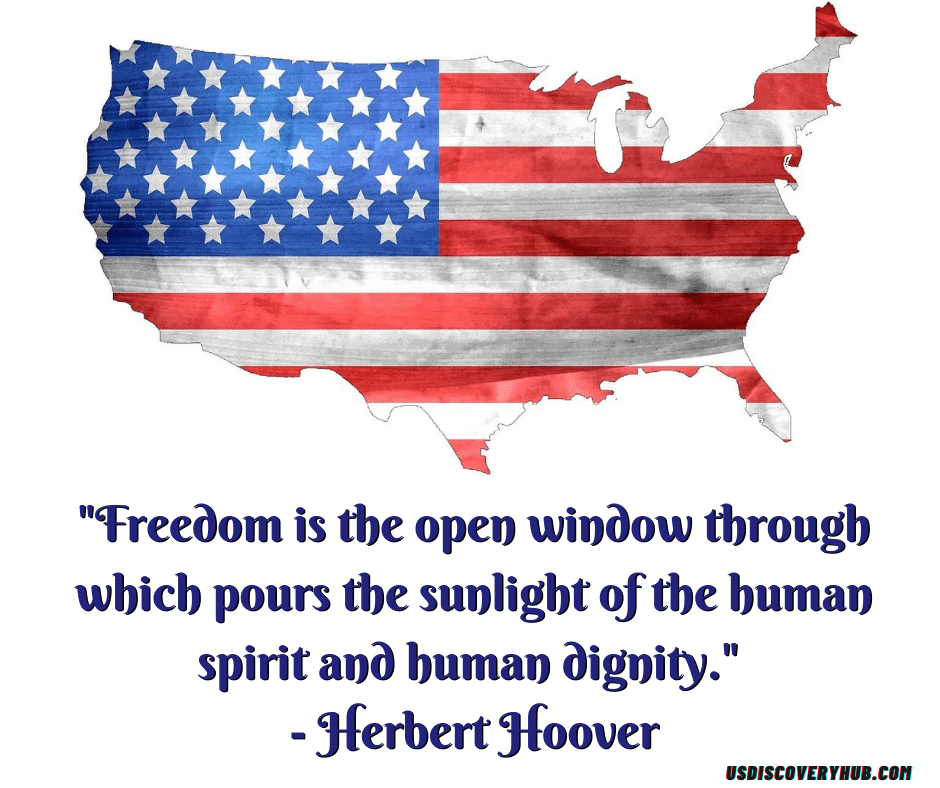
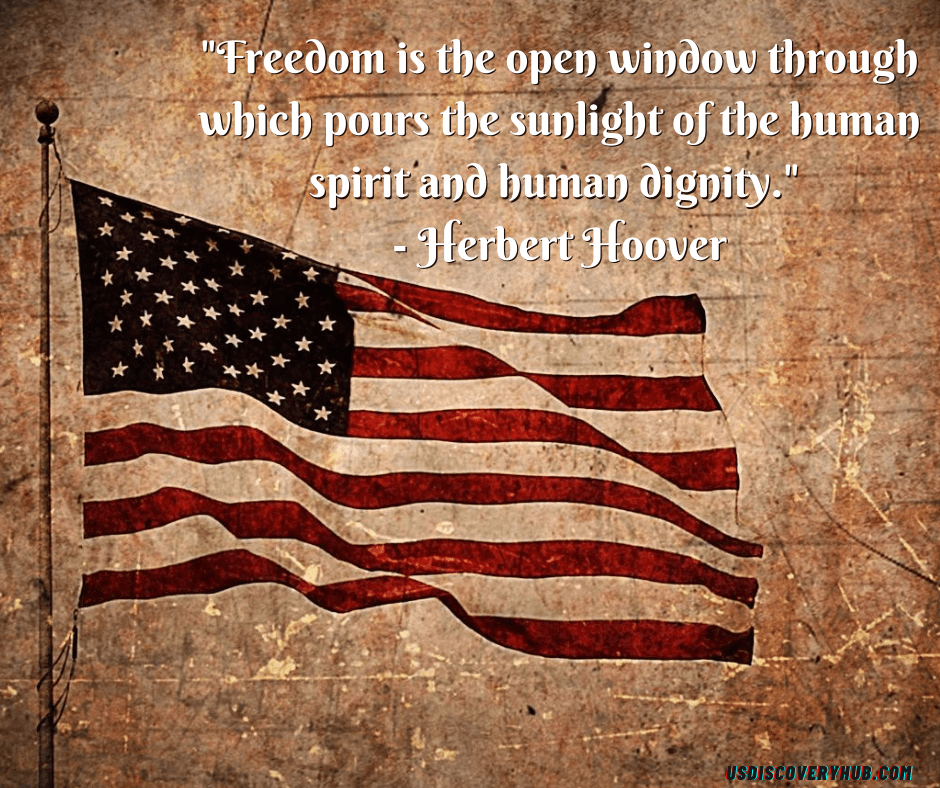
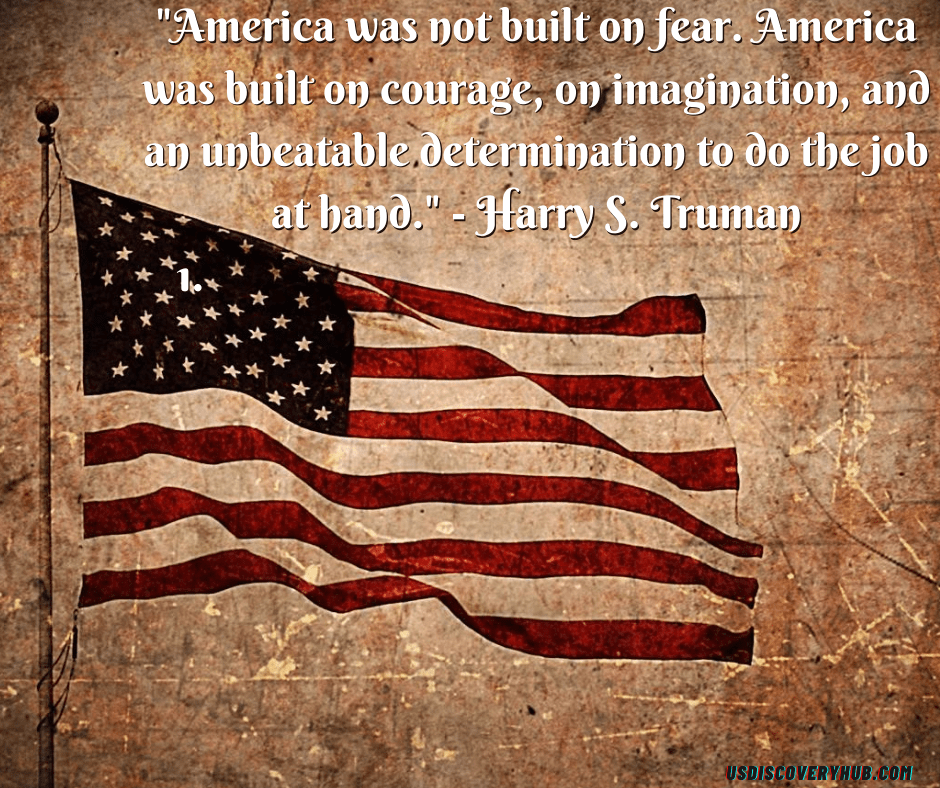
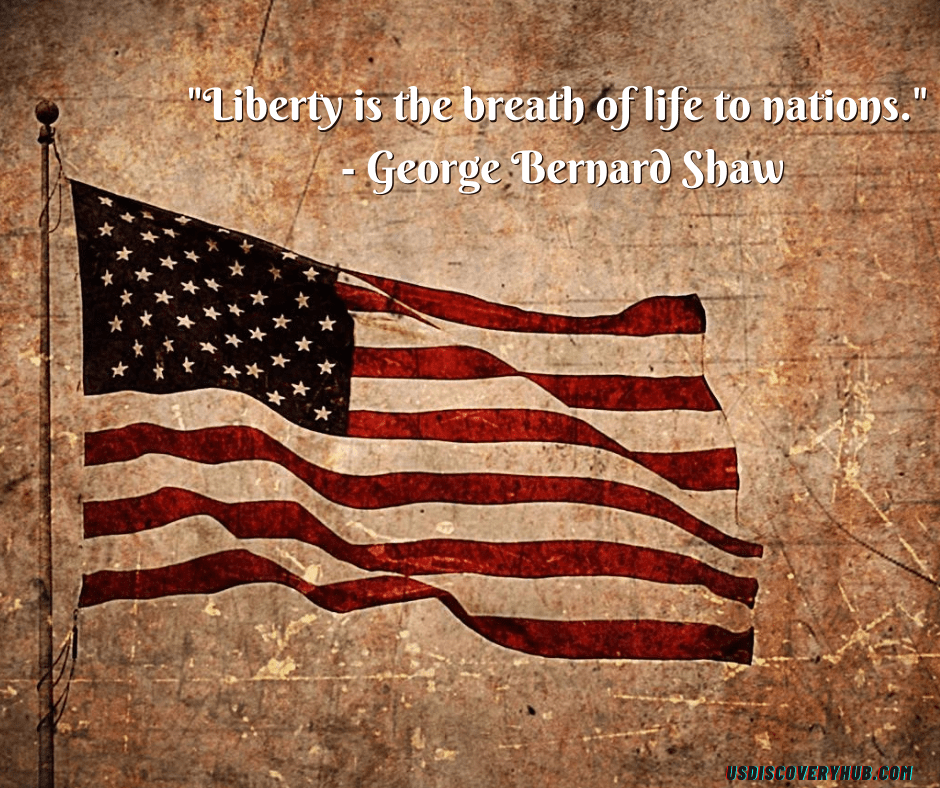
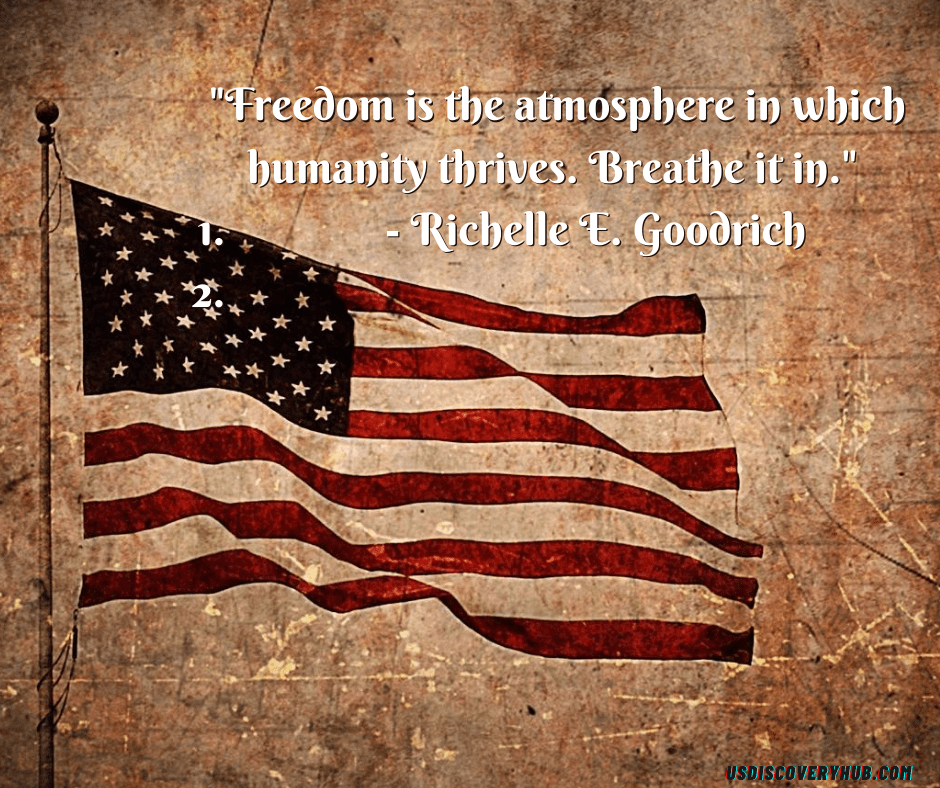
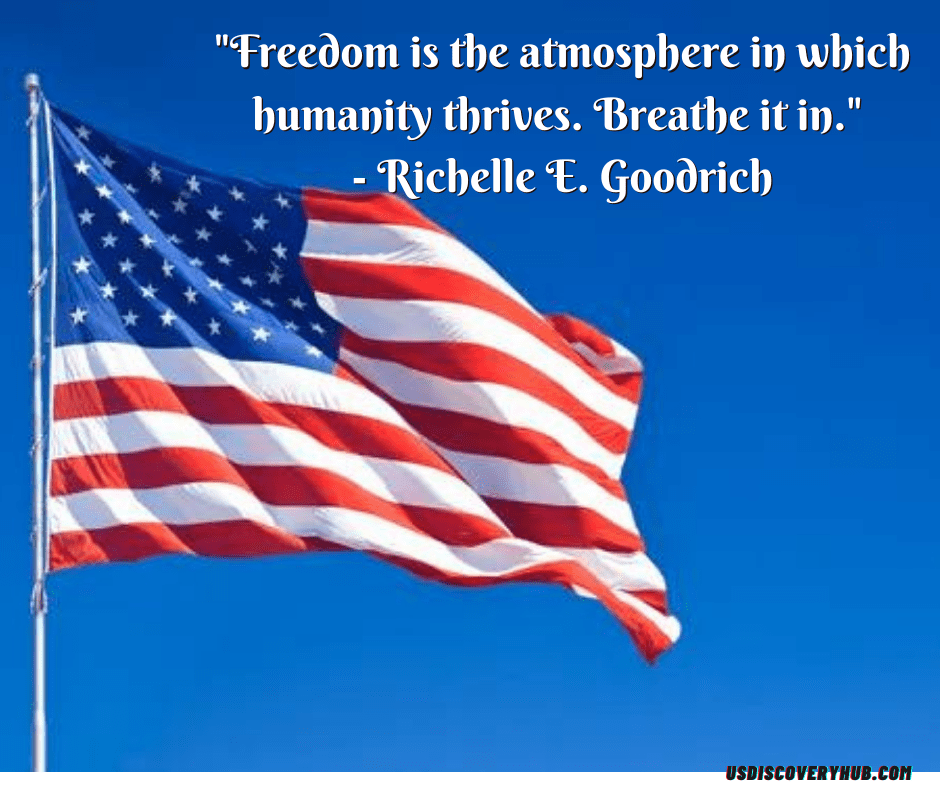
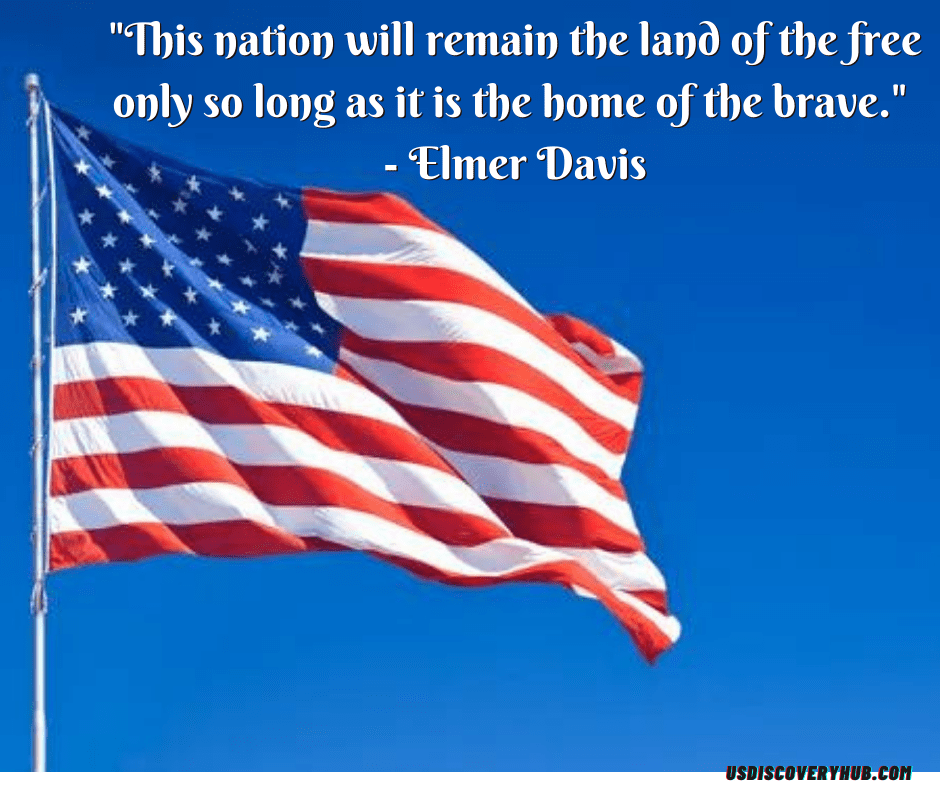
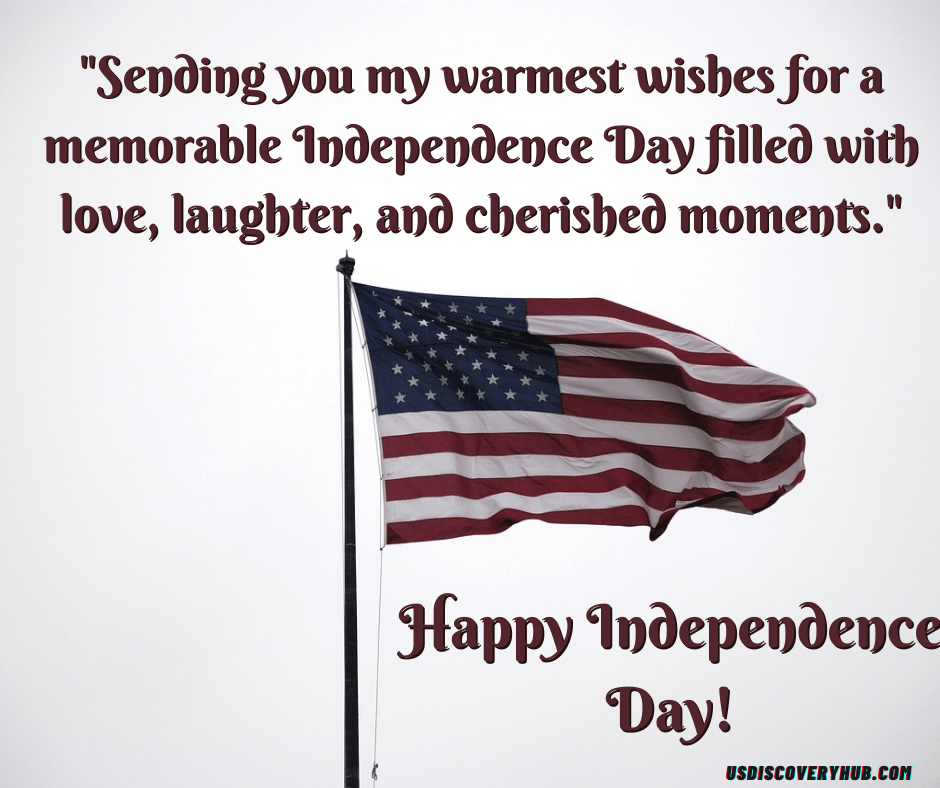

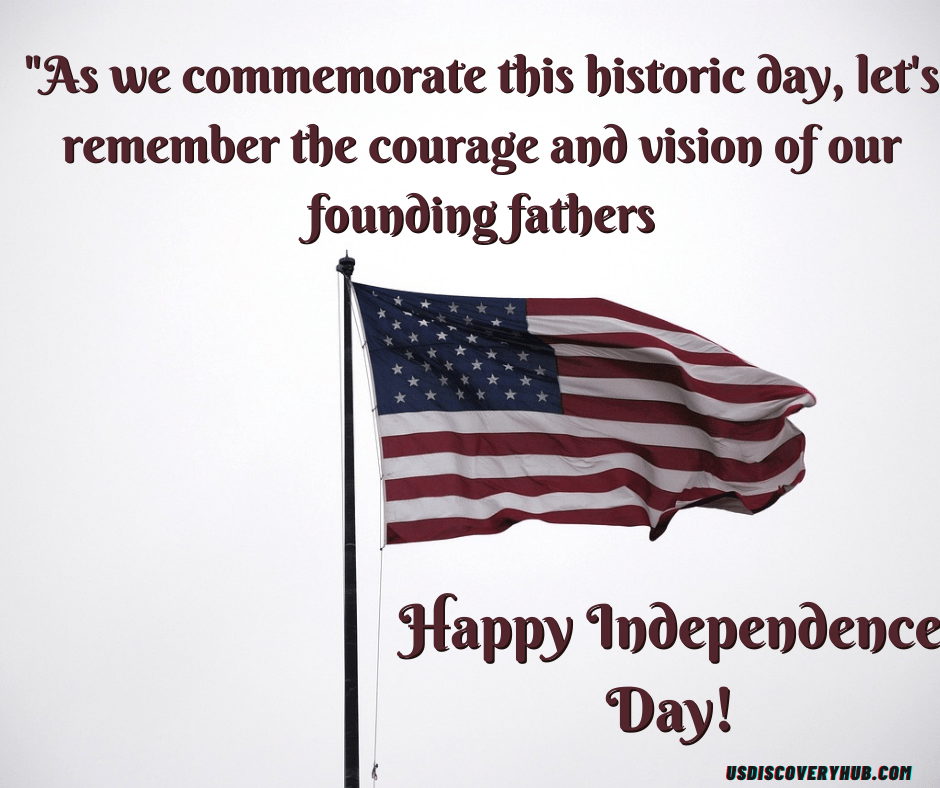
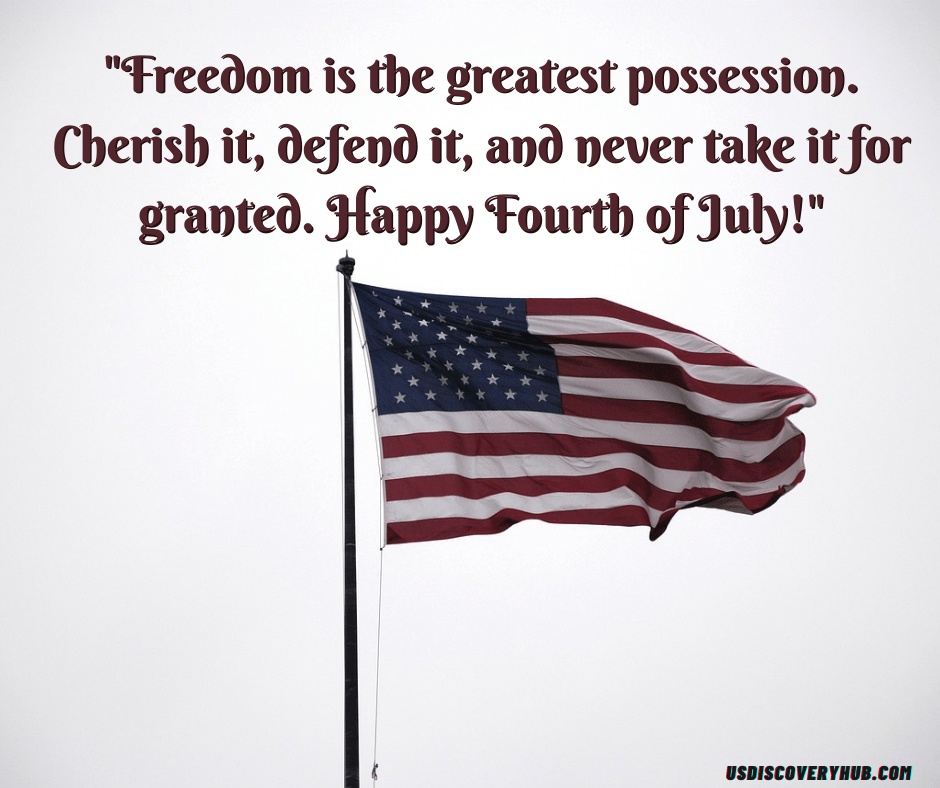
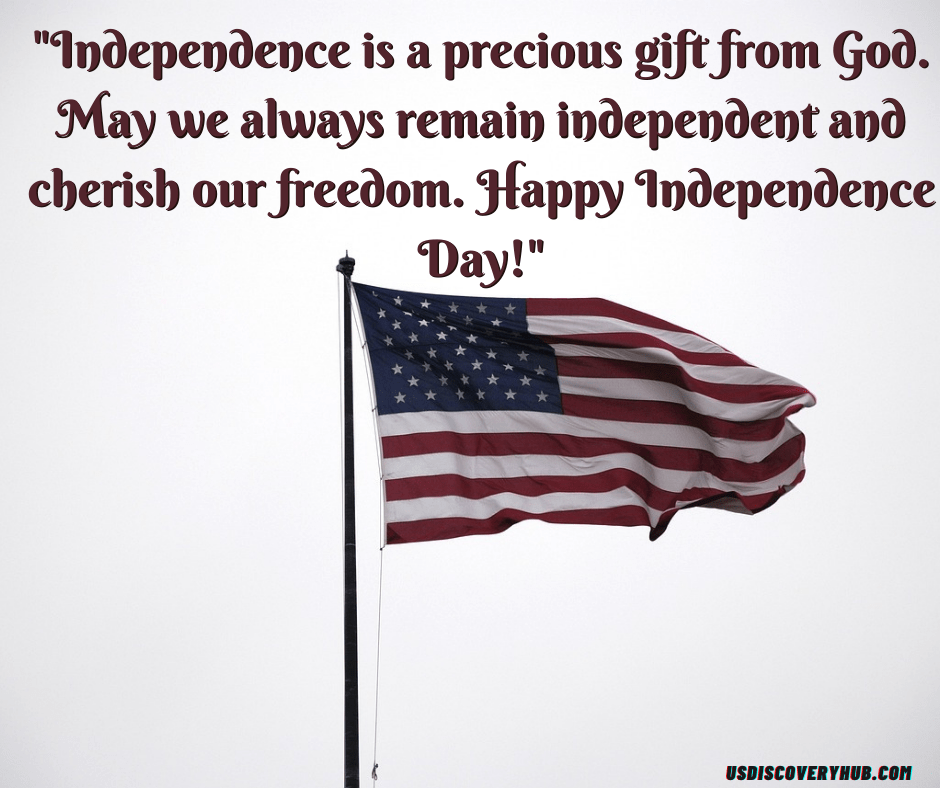

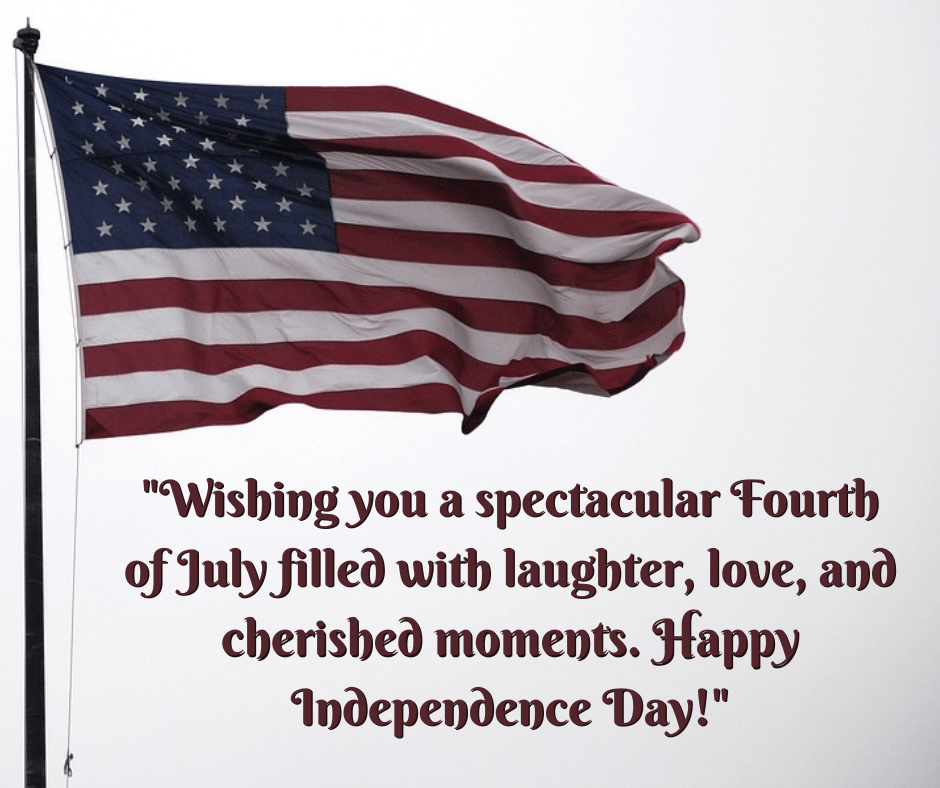
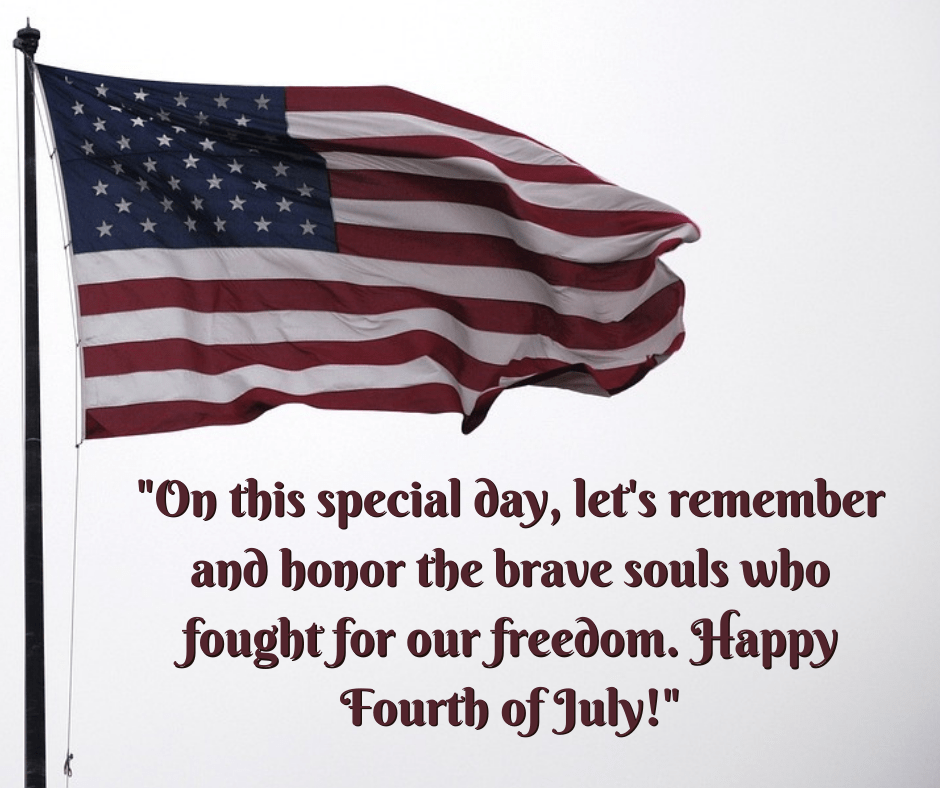
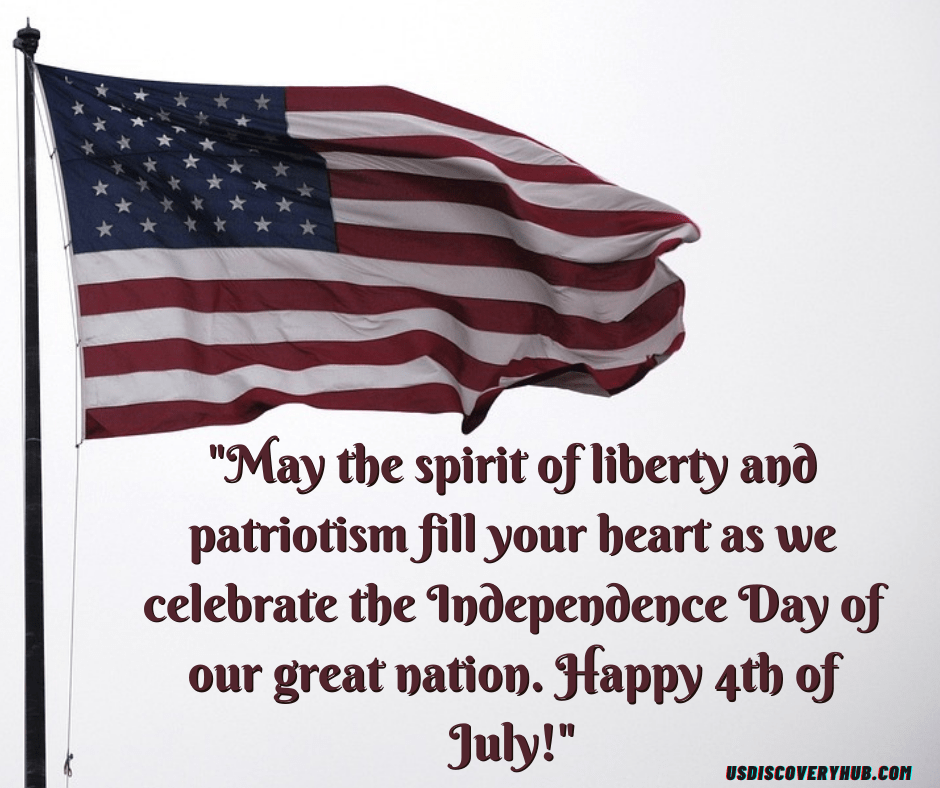

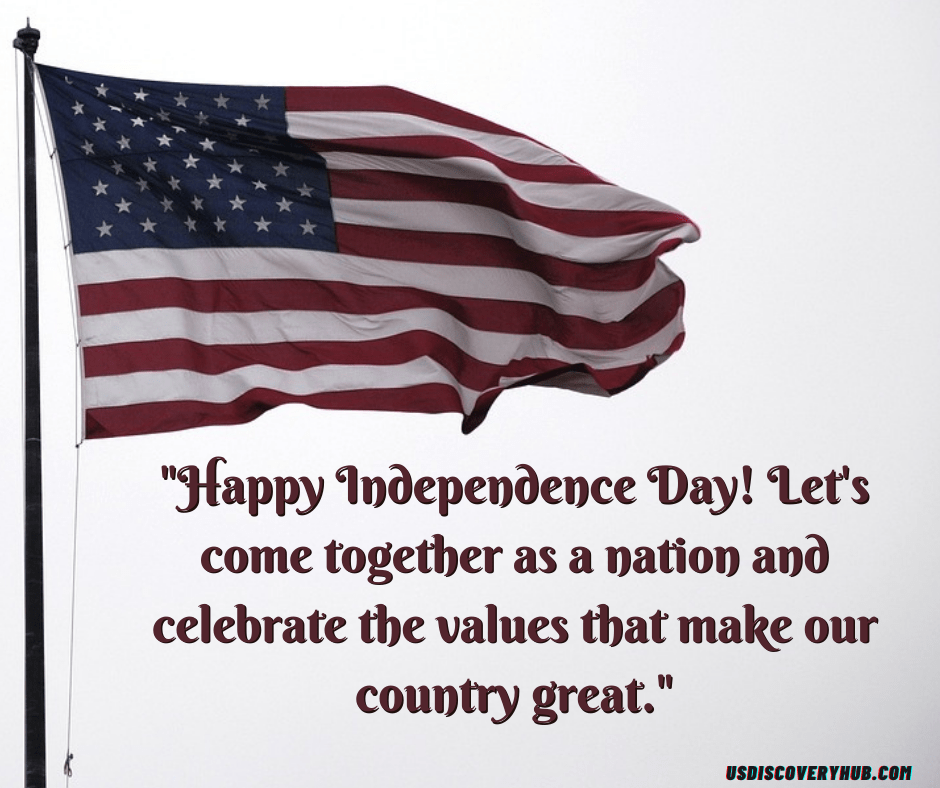
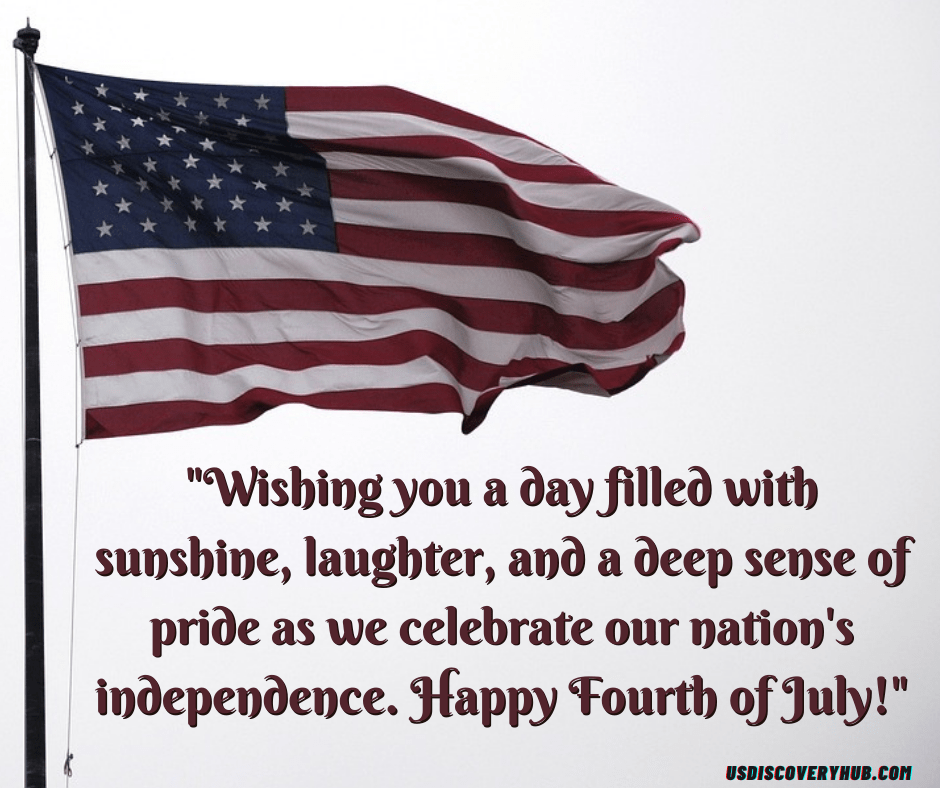
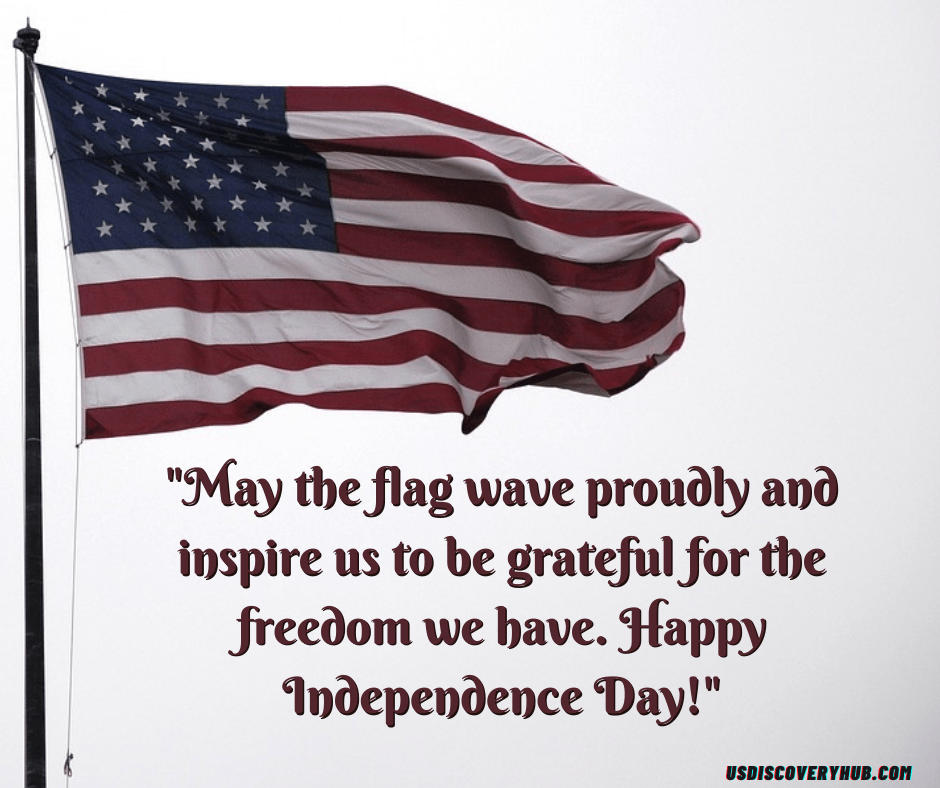
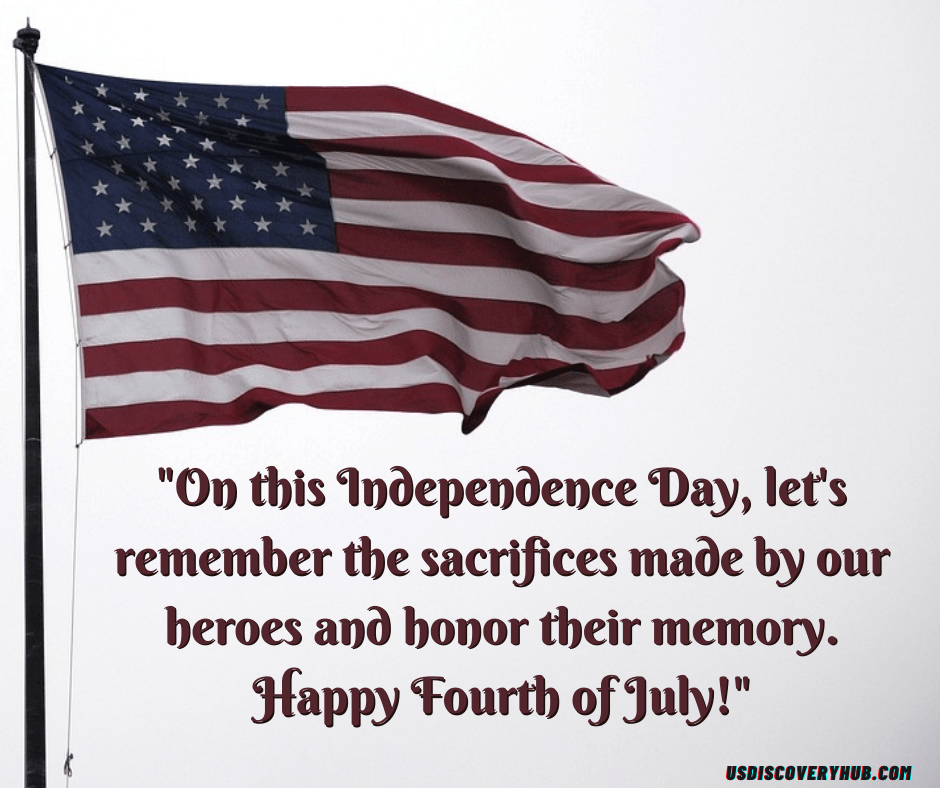
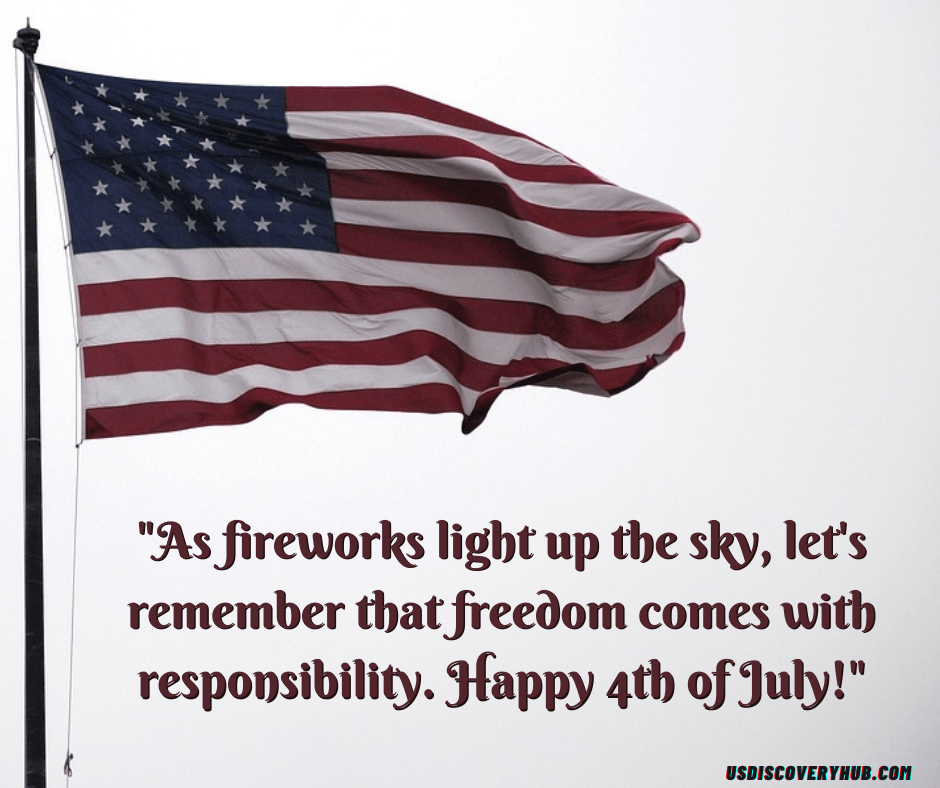
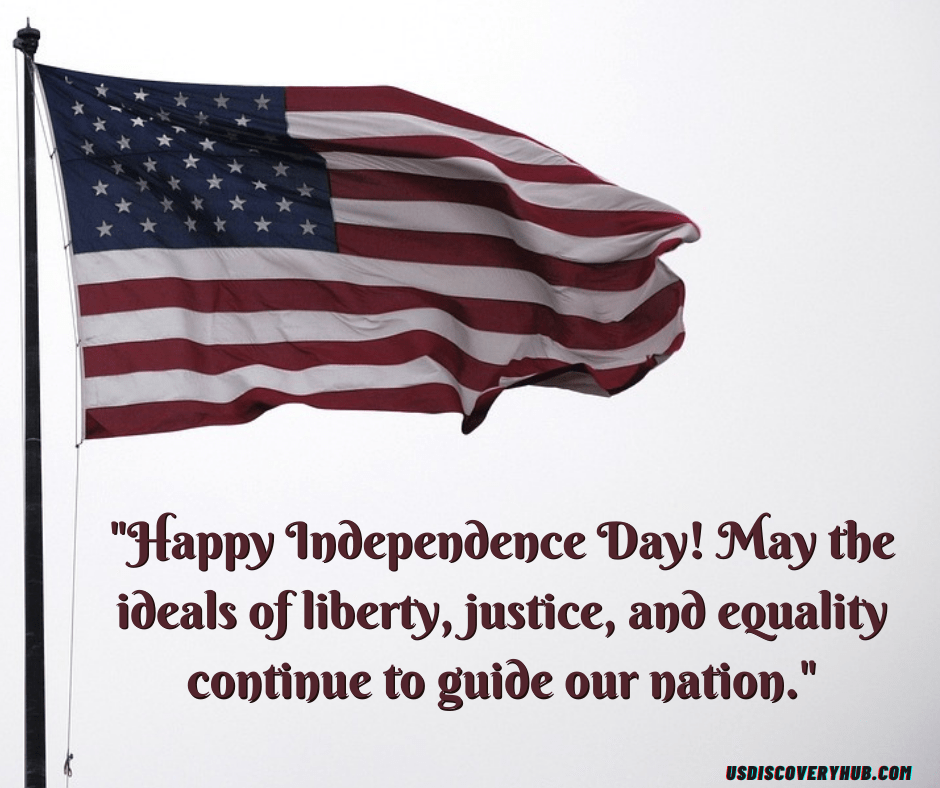
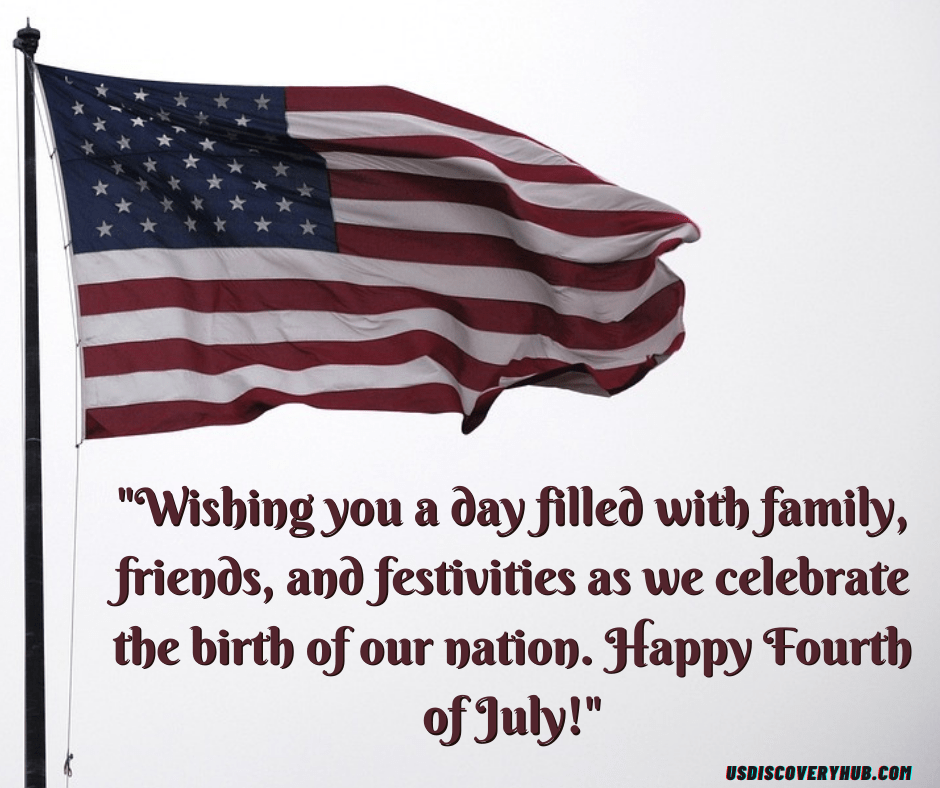
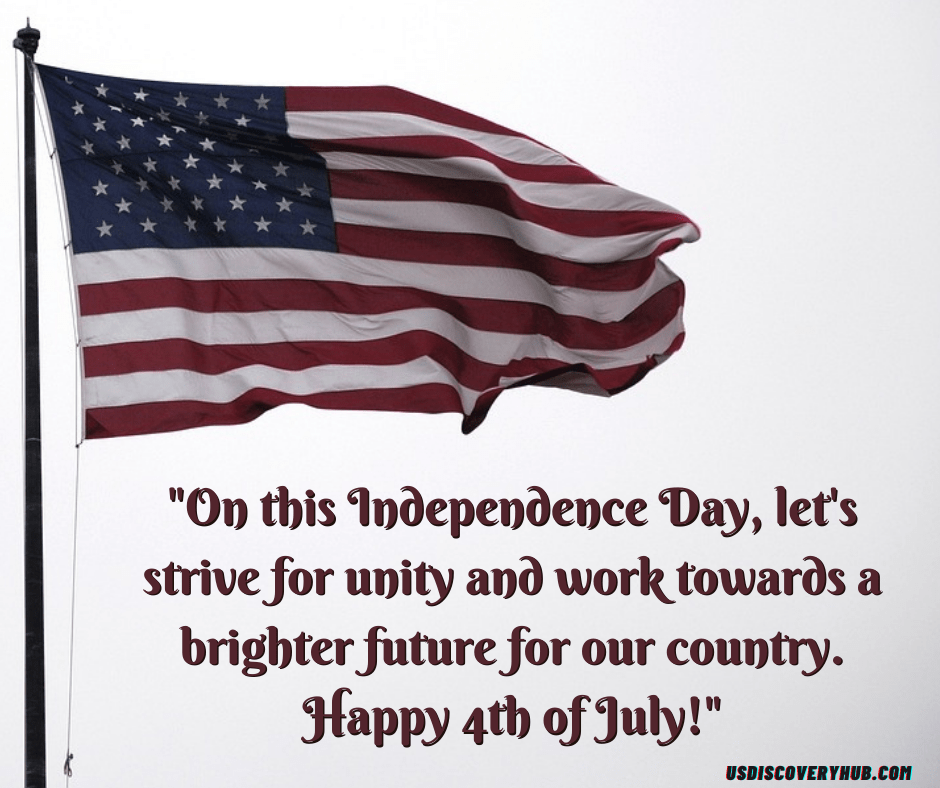
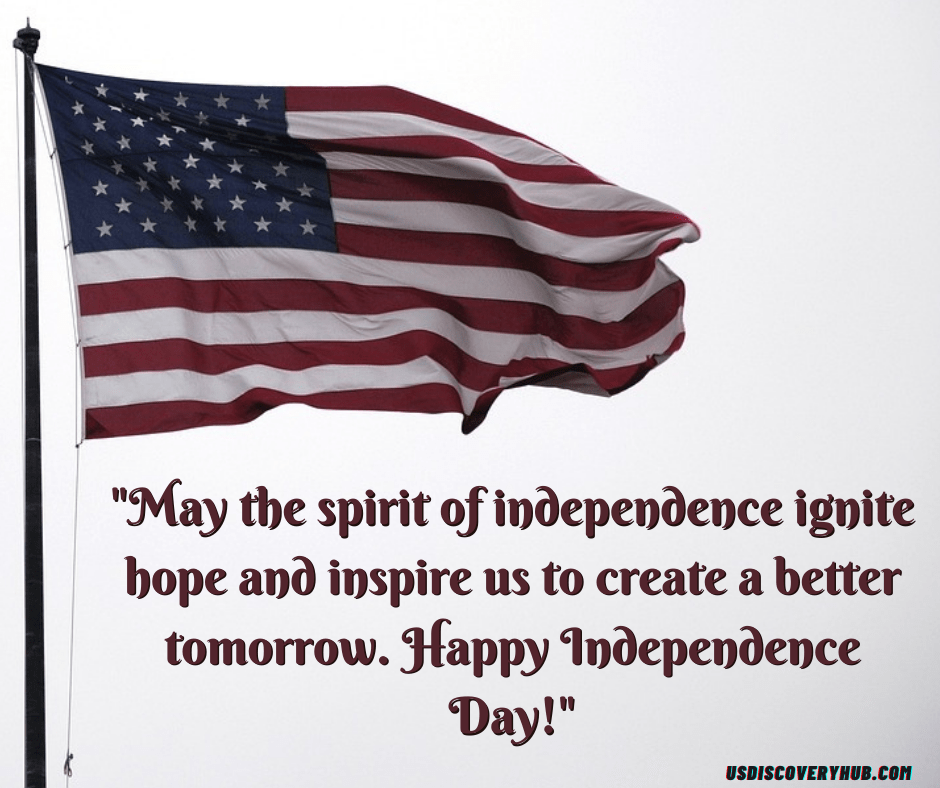
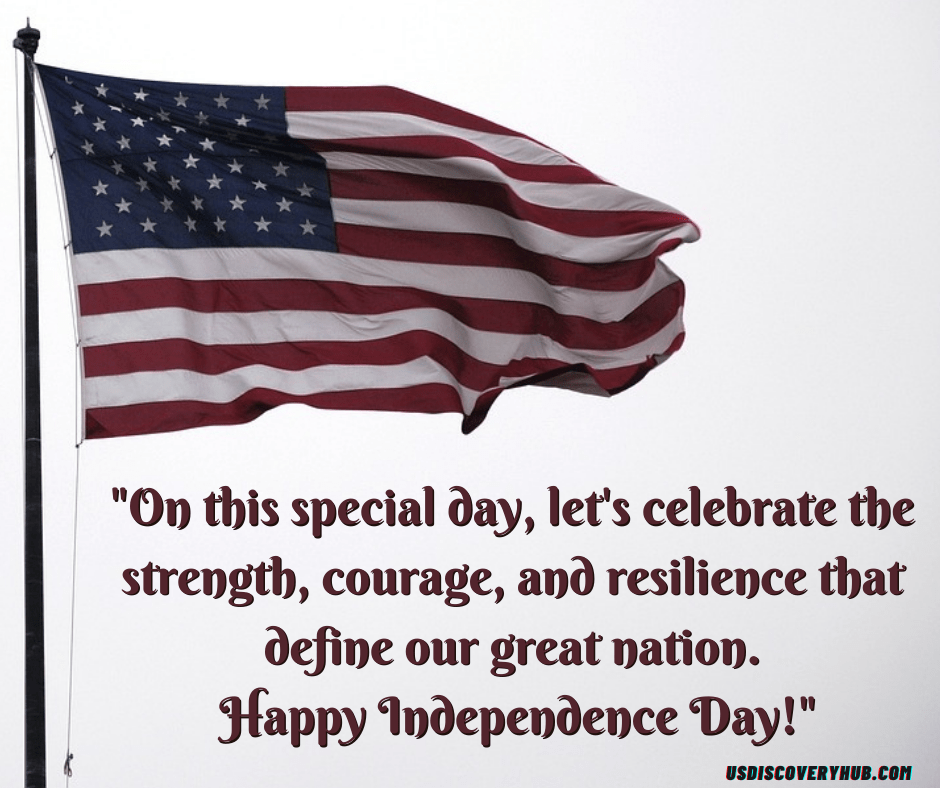
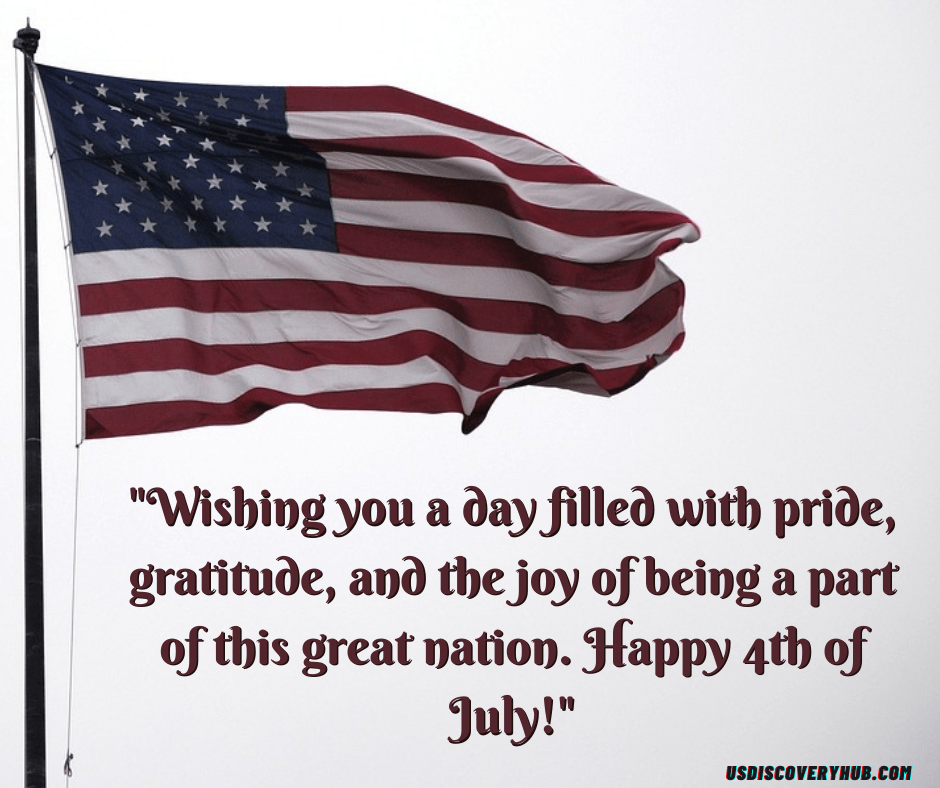
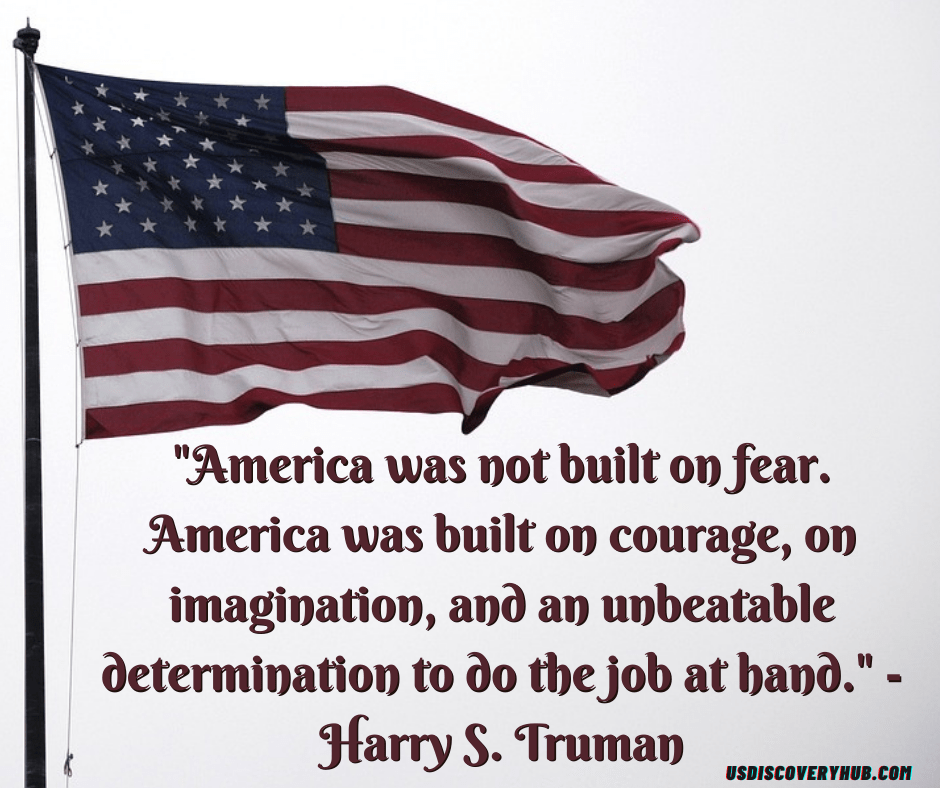


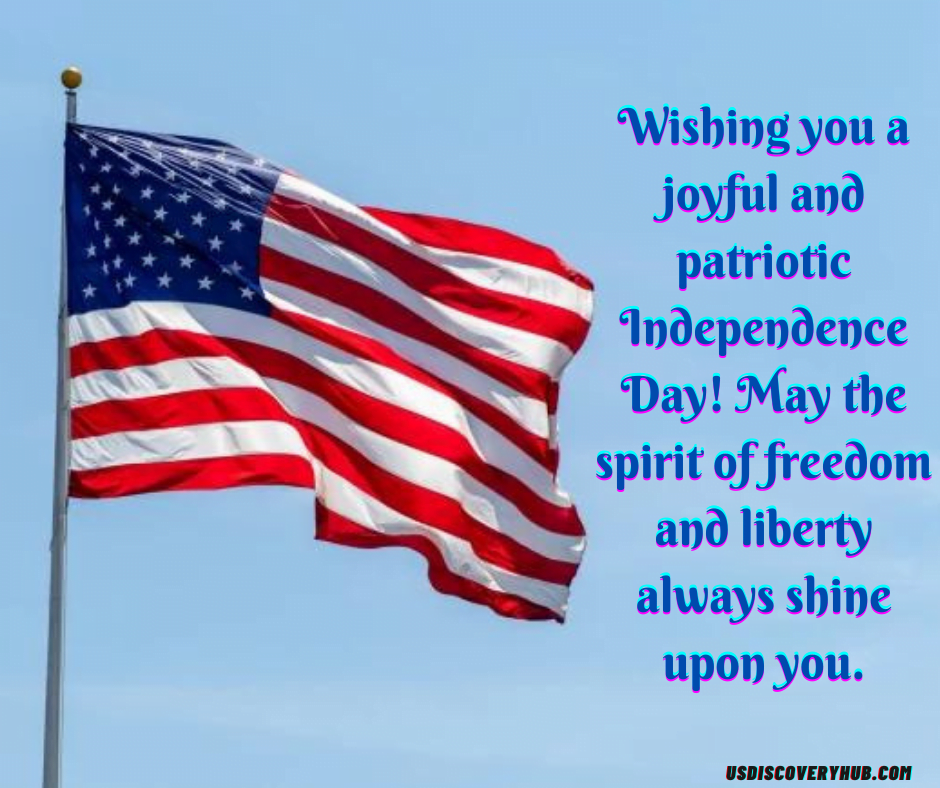
Independence Day of United States related Facts
facts related to the United States Independence Day:
- The Declaration of Independence was adopted on July 4, 1776, but it was not actually signed until August 2, 1776.
- Three U.S. presidents, John Adams, Thomas Jefferson, and James Monroe, all died on July 4. Adams and Jefferson, who were instrumental in drafting the Declaration of Independence, died on the same day in 1826, exactly 50 years after its adoption.
- The first public reading of the Declaration of Independence took place on July 8, 1776, in Philadelphia.
- The United States celebrated its first Independence Day in 1777 with fireworks, bonfires, and parades.
- Congress declared July 4 a federal holiday in 1870, making it an official holiday for federal employees.
- Massachusetts became the first state to recognize Independence Day as a statewide holiday in 1781.
- The original copy of the Declaration of Independence is housed in the National Archives in Washington, D.C. It is encased in a titanium and aluminum frame filled with inert argon gas to preserve it.
- The Liberty Bell in Philadelphia is tapped, not rung, every year on July 4th to mark the anniversary of the Declaration of Independence.
- The oldest continuous Independence Day celebration in the United States is held in Bristol, Rhode Island, which has celebrated since 1785.
- The original United States flag had 13 stars representing the 13 colonies, but the design has evolved over time as new states joined the Union.
- The Star-Spangled Banner, the national anthem of the United States, was written by Francis Scott Key during the War of 1812 and is set to the tune of a British drinking song.
- The first fireworks display at the White House took place on July 4, 1801, when President Thomas Jefferson hosted a celebration.
- The United States gained independence from Great Britain after the American Revolutionary War, which lasted from 1775 to 1783.
- The Declaration of Independence was mainly written by Thomas Jefferson, but it went through revisions and edits by other members of the Continental Congress.
- Independence Day was not declared a paid federal holiday until 1938.
- The oldest Fourth of July parade in the United States is held in Bristol, Rhode Island, dating back to 1785.
- The American flag’s current design with 50 stars representing the 50 states was adopted on July 4, 1960, after Hawaii became a state.
- The oldest continuous Independence Day fireworks display in the United States is held in York, Pennsylvania, dating back to 1762.
- The town of Seward, Alaska, has a unique Independence Day tradition called the Mount Marathon Race, where participants race up and down a steep mountain trail.
- The United States celebrates Independence Day with various traditions, including fireworks displays, parades, barbecues, picnics, concerts, and family gatherings.
Independence Day of United States related FAQs
When did USA got Independence?
The United States gained its independence from Great Britain on July 4, 1776. On this date, the Continental Congress adopted the Declaration of Independence, which declared the thirteen American colonies as a new nation separate from British rule. The document outlined the colonies’ grievances and proclaimed their right to self-governance and freedom. While the Revolutionary War between the colonies and Great Britain continued until 1783, July 4, 1776, is considered the symbolic date of the United States’ independence.
How is Independence Day celebrated in USA?
Independence Day in the USA is celebrated with patriotic fervor. People participate in parades, watch fireworks displays, gather for picnics and barbecues, dress in red, white, and blue, and engage in activities like concerts, flag-raising ceremonies, and family gatherings. It is a day of national pride and unity.
Who ruled USA before independence?
Before gaining independence, the United States was ruled by Great Britain. The American colonies were under British rule and subject to British laws and policies enforced by the British monarchy and its representatives, such as royal governors and appointed officials.
Who declared Independence Day in US?
The Continental Congress declared Independence Day in the United States. On July 4, 1776, they adopted the Declaration of Independence, asserting the thirteen American colonies’ separation from British rule. This document, primarily drafted by Thomas Jefferson, served as the formal proclamation of independence.
Why did America want Independence from Britain?
America wanted independence from Britain due to several reasons. First, the colonists believed in the principles of self-governance and individual rights, feeling that British rule infringed upon these ideals. Second, they objected to taxation without representation, as they had no say in the British Parliament. Additionally, trade restrictions imposed by Britain hindered economic growth. The colonists sought to establish their own government, protect their rights, and control their own affairs, leading to the desire for independence.
Where was Independence declared in USA?
The Declaration of Independence was declared and adopted by the Continental Congress in Philadelphia, Pennsylvania, in what is now known as Independence Hall.
How did the British lose America?
The British lost America due to a combination of factors. The American colonies’ persistent resistance, fueled by widespread support for independence and skilled military leadership, weakened British control. The war’s extended duration and vast distances strained British resources and public support. Additionally, external factors like international support for the American cause, logistical challenges, and the British government’s strategic mistakes, including underestimating the colonies’ determination, ultimately led to their defeat and the recognition of American independence.
What country was the first to gain Independence in America?
The first country to gain independence in America was the United States.